Professional wrestling throws are the application of professional wrestling techniques that involve lifting the opponent up and throwing or slamming them down. They are sometimes also called "power" maneuvers, as they are meant to emphasize a wrestler's strength. Many of these moves are used as finishers by various wrestlers, who refer to them by several different names that reflect their gimmick. Moves are listed under general categories whenever possible.
Professional wrestling holds include a number of set moves and pins used by performers to immobilize their opponents or lead to a submission. This article covers the various pins, stretches and transition holds used in the ring. Some wrestlers use these holds as their finishing maneuvers, often nicknaming them to reflect their character or persona. Moves are listed under general categories whenever possible.
A suplex is an offensive move used in sport wrestling as well as amateur wrestling and professional wrestling. It is a throw that involves lifting the opponents and bridging or rolling to slam them on their backs.
Strikes can be offensive moves in professional wrestling, that can sometimes be used to set up an opponent for a hold or for a throw. There are a wide variety of strikes in pro wrestling, and many are known by several different names. Professional wrestlers frequently give their finishers new names. Occasionally, these names become popular and are used regardless of the wrestler performing the technique.
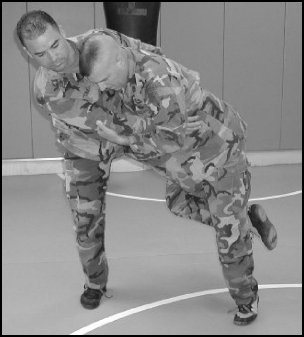
In martial arts and combat sports, a takedown is a technique that involves off-balancing an opponent and bringing them to the ground with the attacker landing on top. The process of quickly advancing on an opponent and attempting a takedown is known as shooting for a takedown, or simply shooting. Takedowns are usually distinguished from throws by amplitude and impact, where the purpose of a throw is to outright eliminate the opponent while purpose of a takedown is to bring the opponent down on the ground, assume a dominant position and then proceed to finish them with jointlocks, chokeholds, or ground and pound.
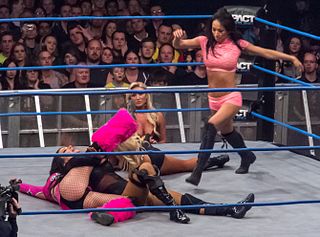
In professional wrestling, a pin is a move where a wrestler holds an opponent's shoulders to the mat in an attempt to score a fall. A pinfall is a common victory condition, where the attacker pins an opponent and the referee makes a three count before the opponent gets released from the pin.

The Boston crab is a professional wrestling hold that typically starts with one wrestler lying in a supine position on the mat, with the other wrestler standing and facing them. It is a type of spinal lock where the wrestler hooks each of the opponent’s legs in one of their arms and then turns the opponent face-down, stepping over them in the process. The final position has the wrestler in a semi-sitting position and facing away from the opponent, with the opponent’s back and legs bent back toward their head. The original name for the maneuver was the Backbreaker, before that term became known for its current usage. In modern wrestling, the Boston crab is not treated as a lethal submission maneuver, even though it was considered a match-ending hold in the past.
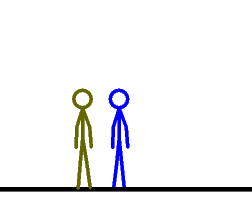
A powerbomb is a professional wrestling throw in which an opponent is lifted and then slammed back-first down to the mat. The standard powerbomb sees an opponent first placed in a standing headscissors position. The opponent is then lifted on the wrestler's shoulders and slammed down back-first to the mat. A prawn hold is commonly used for a pinning powerbomb.

In professional wrestling a DDT is any move in which the wrestler has the opponent in a front facelock/inverted headlock and falls down / backwards to drive the opponent's head into the mat. The classic DDT is performed by putting the opponent in a front facelock and falling backwards so that the opponent is forced to dive forward onto their head. Although widely credited as an invention of Jake Roberts, who gave the DDT its famous name, the earliest known practitioner of the move was Mexican wrestler Black Gordman, who frequently performed it during the 1970s before Roberts popularized it nationwide.

Backbreaker refers to a kind of professional wrestling move which sees a wrestler dropping an opponent so that the opponent's back impacts or is bent backwards against a part of the wrestler's body, usually the knee. The standard version of the move sees the wrestler scoop their opponent horizontally before dropping to one knee, slamming the opponent's back on their other knee.
In professional wrestling, a neckbreaker is any throw or slam that focuses its attack on the opponent's neck. One type of neckbreaker involves the wrestler slamming an opponent's neck against a part of the wrestler's body, usually the knee, head or shoulder. The other type of neckbreaker is a slam technique in which the wrestler throws an opponent to the ground by twisting the opponent's neck. This also refers to a "back head slam" where a wrestler drops to the mat while holding an opponent by their neck.
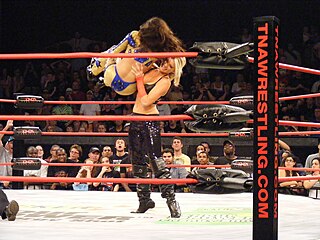
A chokeslam is a type of body slam in professional wrestling, in which a wrestler grasps an opponent's neck, lifts them up, and slams them to the mat. It is common in televised wrestling because it is simple and relatively safe, yet looks powerful on camera. The chokeslam is typically used as a finisher by large wrestlers, further enhancing its perception as a powerful maneuver. This maneuver can be more damaging if the victim is slammed into an object, such as a table, steel chair, or garbage can.
An armlock in grappling is a single or double joint lock that hyperextends, hyperflexes or hyperrotates the elbow joint or shoulder joint. An armlock that hyper-extends the elbow is known as an armbar, and it includes the traditional armbar, the shoulder triangle armbar, and the shotgun armbar. An armlock that hyper-rotates the arm is known as an armcoil, and includes the americana, kimura, and omaplata. Depending on the joint flexibility of a person, armcoils can either hyper-rotate only the shoulder joint, only the elbow joint, or both the elbow joint and shoulder joint.

A grappling hold, commonly referred to simply as a hold that in Japanese is referred to as katame-waza, is any specific grappling, wrestling, judo, or other martial art grip that is applied to an opponent. Grappling holds are used principally to control the opponent and to advance in points or positioning. The holds may be categorized by their function, such as clinching, pinning, or submission, while others can be classified by their anatomical effect: chokehold, headlock, joint-lock, or compression lock. Multiple categories may be appropriate for some of these holds.
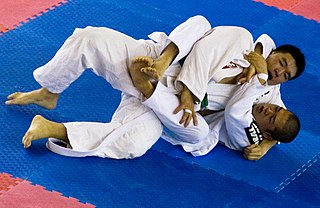
In combat sports, a spinal lock is a multiple joint lock applied to the spinal column, which is performed by forcing the spine beyond its normal ranges of motion. This is typically done by bending or twisting the head or upper body into abnormal positions. Commonly, spinal locks might strain the spinal musculature or result in a mild spinal sprain, while a forcefully and/or suddenly applied spinal lock may cause severe ligament damage or damage to the vertebrae, and possibly result in serious spinal cord injury, stroke, or death. Spinal locks and cervical locks are forbidden in IBJJF Brazilian jiu-jitsu competitions, amateur mixed martial arts (MMA), multiple forms of no Gi jiu-jitsu, judo, and other martial arts. However, professional MMA and some Brazilian jiu-jitsu competitions do permit spinal locks and, particularly, neck cranks, and such moves are trained in various MMA and Brazilian jiu-jitsu schools.
A facebuster, also known as a faceplant, is generally a takedown move in professional wrestling in which an attacking wrestler forces their opponent down to the mat face-first without involving a headlock or facelock. A standard facebuster, also known as a jumping facebuster, involves the wrestler grabbing hold of the opponent's head/hair and dropping down to their knees, forcing the opponent's face into the mat.
A Powerslam or simply Slam is a professional wrestling body slam move in which the wrestler performing the slam falls face-down on top of the opponent. The use of the term "powerslam" usually refers to the front powerslam or the scoop powerslam.

The cradle is a basic technique in amateur wrestling. Its name refers to the move's similarity to the way a person holds an infant in their arms. The wrestler performs the cradle by grabbing the neck of their opponent with one arm and wrapping the elbow of the other arm behind the knee of the opponent. The wrestler then locks both hands together to prevent their opponent from escaping.

A pin is a predicament in wrestling that ends a match regardless of when it occurs. Some situations that near pins but do not meet the criteria, such as having only one shoulder down or having the defending wrestler blocked in a neck bridge, are rewarded with exposure points known as near fall points or back points.
A wrestling move is a technique that helps you directly or indirectly win a wrestling match.















